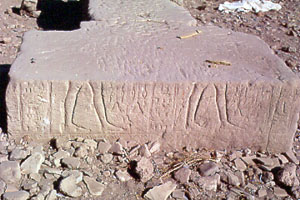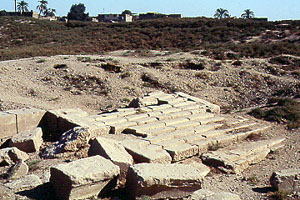|
Koptos, present-day Qift in Middle Egypt
(about 40
km. north of Luxor), was an important city in Graeco-Roman times as it
was one of the places where the trade routes through the
Eastern Desert ended:
|
|
Inhabitants of Qift (Qufti's) are
frequently
hired by archaeological expeditions as workmen. Several areas in their
city have been fenced off to protect the antiquities, which include
mud-brick
and stone buildings:
|
|
|
|
|
 |
|
 |
|
|
|
|
|
|
|
|
Objective of visit:
|
|
To study the registered finds from Berenike
in the store-room
in Qift as well as to have a look at the destination of many of the
travelers
through the Eastern Desert. |
|
Date of visit:
|
|
Spring 1992 and spring 2002. |
|
Fellow visitors:
|
|
Willeke Wendrich, Anna and Leo Barnard (in
1992), Iwona
Zych and André Veldmeijer (in 2002). |
| Results: |
|
Apart from an inventory of the objects in
storage, a
number of slides like the two shown on this webpage. |
| Approximate
position and date
of the site: |
|
Koptos is on the east bank of the Nile, just
north of
Luxor (ancient Thebes). The modern city, called Qift (or 'Quft'
by the locals), encircles several relatively well preserved patches of
the old town. The complete history of the city is not yet known, but it
certainly was an important emporium in Graeco-Roman times (3rd century
BC - 6th century AD) situated as it was at the end of one of the
trading
routes through the Eastern Desert. |
| Short description
of the site: |
|
The remains of Koptos include several large
mud-brick
buildings, some preserved up to over ten metres high, and a number of
temples.
The area is littered with inscribed stone blocks as well as potsherds.
Once trade passed through here on its way between Alexandria and Rome
in
the west and Arabia and India in the east. |
| Additional
remarks: |
|
These visits would not have been possible
without the
indirect support of the EES-expedition to Qasr
Ibrim and the Berenike
Project as well as the help of the Supreme Council of Antiquities
and
several individuals. |
| HOME |
|
|
 |
|
|

